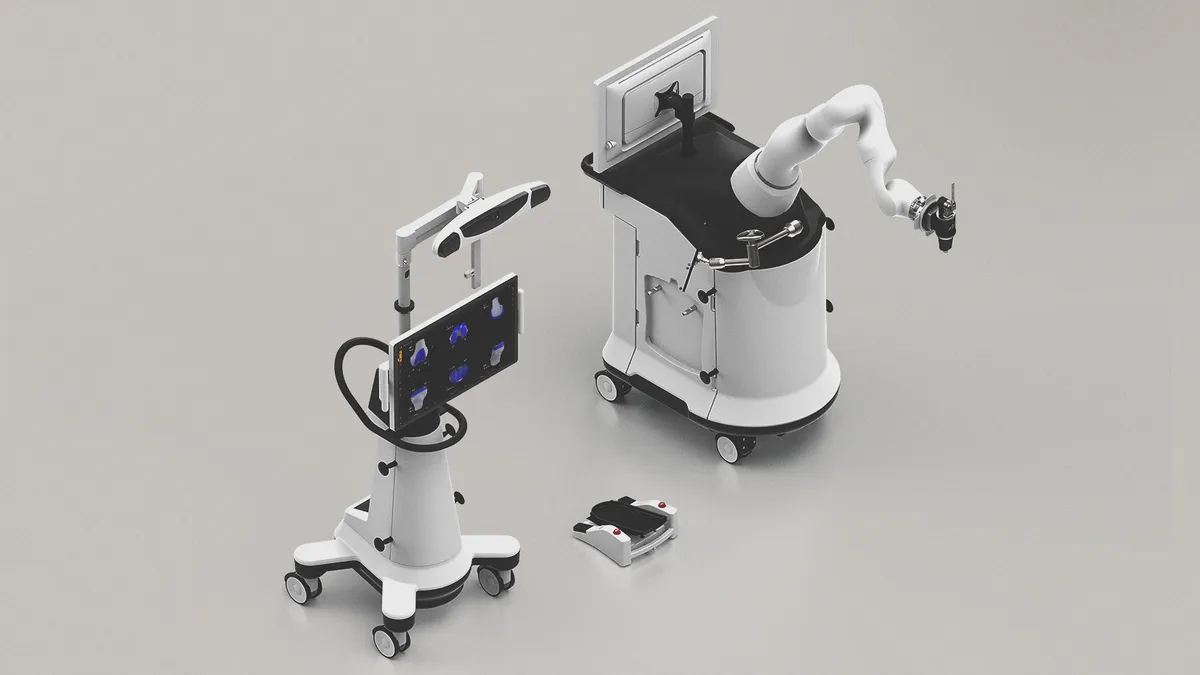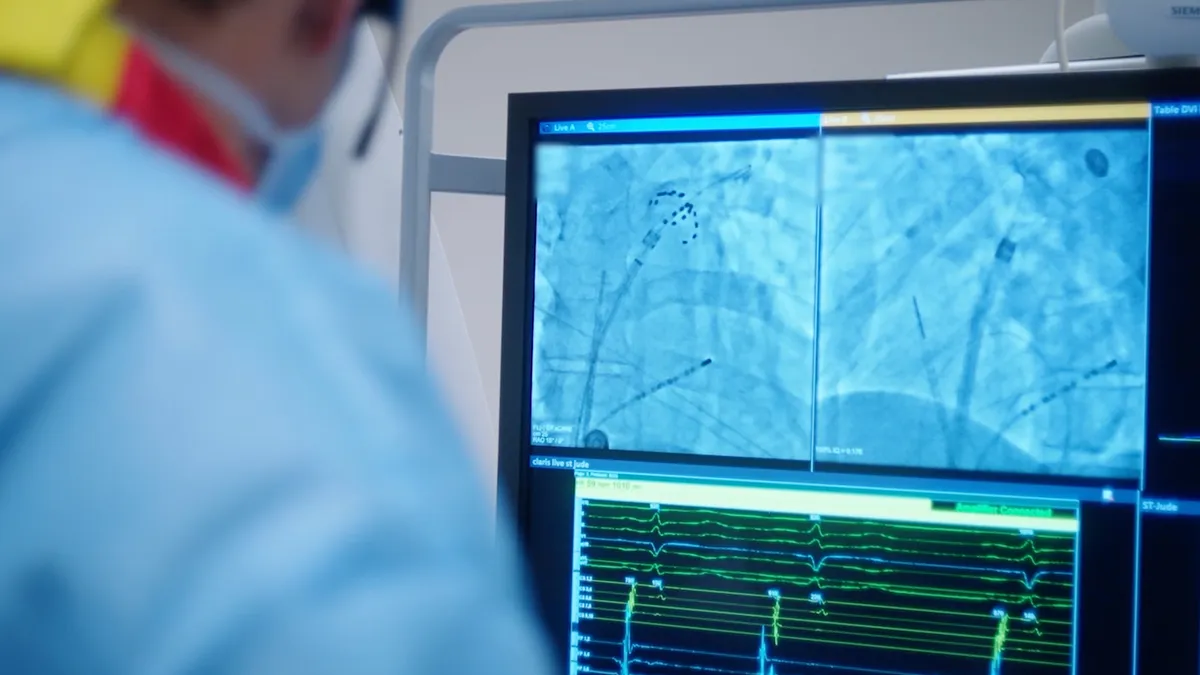After Dexcom grew revenue by 31% in 2020 despite the global economic impact from the coronavirus pandemic, the continuous glucose monitor maker has carried that success into 2021.
CEO Kevin Sayer contends there's still room for growth as the company preps to release its G7 CGM system later this year and expands into larger, untapped populations, like patients with Type 2 diabetes.
The pandemic in some ways spurred success for diabetes tech companies as patients at home embraced services like telehealth and diabetes wearables, accelerating consumer trends seen in recent years.
While there are still questions as to how many patients will keep using these services going forward, Sayer argues consumer behavior may be permanently changed.
"I don't think it's going away anytime soon," Sayer said. "If anything, I think it'll get better on the diabetes side as we get more information."
In an interview during the American Diabetes Association's annual meeting, the CEO also discussed the company's use of direct-to-consumer advertising and what the future of the diabetes tech world looks like as CGMs and insulin pumps become more connected.
This interview has been edited for clarity and brevity.
MEDTECH DIVE: To go back to the G7 CGM data released during the Advanced Technologies and Treatments for Diabetes June conference, what do those results mean for the company, considering that it's your next big product?
KEVIN SAYER: We've been at this G7 platform for quite some time, 2016 and 2017 is when it really started. So, getting to the point where that data is now accessible and the product is working and we have manufacturing lines up and running, it's really a big milestone for us.
Can you give an update on where FDA review and a launch stand now?
SAYER: I'm kind of in the middle of a quiet period there. But there's certainly been nothing we've disclosed that indicates things have changed. We'll be talking a little more about the G7 study and where we are with everything on our next earnings call. Life is good, I'll just leave it at that.
One thing the diabetes tech world is looking at is further expanding into the Type 2 population. What does successfully doing this mean for the future of the company?
SAYER: We continue to be very bullish. In fact, I get nothing but more bullish on this subject because every time we see clinical research presented on Type 2 patients, they do better wearing sensors than without them.
One would ask the question, "Well, if I'm not making insulin decisions with every meal, is this necessary for me?" Well, it is necessary because it provides you information to better manage your life.
We think there's a tremendous market opportunity here. It's solving a different problem than the problem we solve with insulin delivery right now, and we're still not completely penetrated in that market — less than 50% of people in the U.S. taking intensive insulin are on a CGM. So, we've got plenty of room for growth in our core market, but we view this as a very expandable and a great market to be in.
Some question whether CGMs are appropriate for all patients with Type 2 diabetes and want more studies on this population.
SAYER: There's a lot of evidence that's been produced, but it's not like there's a stake in the ground clinical paper that we can take to everybody and say, "This is the answer."
A lot of the pushback is based on cost. These patients are very expensive within their own individual health systems, as far as the cost of treating the comorbidities that go along with late-stage Type 2 diabetes in particular. So, adding a sensor cost to that can be questioned. People want to see more evidence. I think we need more clinical studies. It'd be nice if we had reimbursement. But I think just getting the word out and getting more usage is going to be very important too.
This is a much larger consumer group than the insulin users that we talk to today. I believe over time, as we evolve the product, you'll see us go more directly to that group as well.
Medicare recently eased coverage requirements for therapeutic CGMs, removing the four-times-per-day blood glucose testing requirement. How is that going to impact Dexcom?
SAYER: It's a huge issue. Any time we can reduce the documentation load required from healthcare providers and the documentation load required from patients to get better access to technology, it's a really good thing. I also think when Medicare makes a decision like this, it can flow down to other groups like Medicaid.
How significant of the population was the requirement keeping out? Could the removal have a ripple effect for the company enough to change outlooks?
SAYER: I don't know that it will change any guidance, our growth estimates are very aggressive. We don't lack for pushing the needle. I think we'll get access to more people, but I don't know that it moves our guidance at all. It's part of the plan.
One thing you talked about during the last earnings call was lowering average sale prices in international markets. How has that process gone since you made the changes?
SAYER: I really can't talk much about the financial results … Anecdotally, the reimbursement authorities have responded very well to us. For those who haven't responded yet, they are literally all studying it, and we owe them more information.
Dexcom has made direct-to-consumer advertising a key part of its marketing strategy. Why has the company prioritized this approach?
SAYER: What we realized several years ago, as we started making this turn, is we needed to focus a lot more on the individual user of the system rather than just their healthcare provider. We started down the DTC path many years ago when we reorganized our marketing department. In all honesty, we brought in some people from outside of medical devices who would look at this the way more of a consumer company would look at it.
I think it's an evolution that's ongoing in our company, not just from how we acquire new users of the system because we still get new users with our own online messaging through healthcare providers' offices. That's not going to change. But we had to get access to more people.
There are a lot of people with diabetes who don't see an endocrinologist, and we don't call on those doctors directly ourselves. How are they going to find out about our system if we don't educate them? The purpose of the DTC ads is largely to create awareness. And there's a cycle: when more awareness is created, then more access is granted.
After Dexcom's Super Bowl commercial aired in February, some criticism on Twitter and online brought up access and cost issues for patients who could benefit from CGM use. Can you address the concerns about access issues for patients?
SAYER: I understand where the patients are coming from because it is difficult, in some cases, for them to get the product, and it's particularly difficult when somebody doesn't have insurance … In essence, by spending money like that and driving awareness, what we're doing is making it more possible for people to get access to the technology than it was before.
We've moved as much of our business to the drugstore as we possibly can ... We've reduced the prices that we net from these patients to get them better access to the technology in that environment. We're doing what we can. The flip side is we have a company to run. We are a public company and we have to keep growing. So, you'll see this balanced over time. And it's okay. People can react, and I got a lot of personal notes too. But I will tell you the positives of the Super Bowl ad outweighed the negatives by a long, long, long, long way.
The next big move is connected systems between CGMs and insulin pumps. As these two sub-markets become more dependent on each other, where do you see the diabetes tech world in the next couple of years? And as the devices become more integrated, do you see the companies becoming more integrated as well?
SAYER: We started the whole interoperability thing many years ago. Our two major partners today are Insulet and Tandem Diabetes Care ... and we work with some others as well. It is a major engineering effort to support all this interoperability because everybody builds their own system the way they think is optimal.
We've designed all our future product offerings to be connected.
The question becomes, does all this merge together? Well, on the one hand, you can look at it and say yes. On the other hand, you look at it and say, if we're partnered with four pump companies and pump companies are partnering with two CGM companies — I think it's all good to give people choice — the flip side of that is it's very difficult to do engineering to give everybody all the options that they want.
Do you see Dexcom either making or owning a pump of its own in the future?
SAYER: Not today. We evaluate all business opportunities, but today we're happy with the business that we have, the growth that we have and the untapped markets that we continue to serve. We love our partners. They do a very good job of that, and we'll let them keep doing it.




















